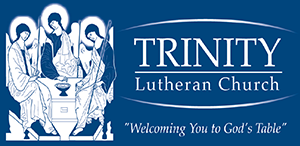For many years, the church has operated in the mode of “Come and see.” We’ve invited people to our worship services. We’ve
encouraged children to attend our Sunday School. We’ve had special events and community outreaches and tried to encourage people to come into our buildings and, we hoped, have an experience of meeting God so that they would want to become part of our community. The truth is that this model does have some basis in Scripture: “The next day Jesus decided to go to Galilee. He found Philip and said to him, “Follow me.” Now Philip was from Bethsaida, the city of Andrew and Peter. Philip found Nathanael and said to him, “We have found him of whom Moses in the Law and also the prophets wrote, Jesus of
Nazareth, the son of Joseph.” Nathanael said to him, “Can anything good come out of Nazareth?” Philip said to him, “Come and see” (John 1:43-46). “Come and see” Jesus. That’s a good invitation. It does seem to validate the thinking that our main job is to simply invite people to come to our worship services where there is an opportunity to meet Christ.
But…
Is this the whole story?
As you may remember, the main text that has been used to describe the Church’s mission for much of Church History is what is
often called “The Great Commission:” “Jesus came and told his disciples, ‘I have been given all authority in heaven and on earth. Therefore, go and make disciples of all the nations, baptizing them in the name of the Father and the Son and the Holy Spirit. Teach these new disciples to obey all the commands I have given you. And be sure of this: I am with you always, even to the end of the age’” (Matthew 28:18-20). The verbs here are “go and make” [disciples, followers of Jesus] rather than “come and see” [Jesus and/or our nifty church programs].
Many people who study the Church see the days we are living in as more similar to the days of the early church than to the last 1,700 years of “Christendom” in the Western world. After the Roman Emperor Constantine became a Christian in the early 300s, legalized Christianity and then turned all the pagan temples into church buildings, “Come and see” became the default mode of the church’s activity in the West. It made sense. Most people were – at least nominally – Christians. Christianity was well-known and supported by the government. The expectation quickly developed that people would go to Christian worship
services. “Come and see” was an easy invitation.
If you think back about 80 – 90 years in the United States, “Come and see” seemed to be a reasonable way to operate as the
Church. Even 40 years ago, growing up in Hazleton, Pennsylvania, almost all of my friends belonged to a religious congregation: Catholic, Protestant, and a few who were Jewish. Being part of a religious congregation was simply something that almost everybody did. When new people moved into the community, “Come and see,” generally worked pretty well to connect them to an existing congregation and other believers.
However, we know that things have changed. If you ask kids today about how many of their friends regularly attend worship services, the answer is “very few.” There’s not much of a cultural expectation that people will be part of faith communities anymore. The majority of the people whom we might invite to “Come and see” will probably politely reply that they just aren’t interested.
For centuries, worship services have been at the center of the life of Christian congregations. Again, that is completely understandable in the context of Christendom. But Christendom is passing away, and we are finding ourselves in a situation more like that of the early church – when Christianity was something odd and the followers of Jesus lived differently than others. What I think this means for us is that we are called to connect more deeply to Jesus (as the early Christians did) so
that we can help people understand the enormous difference that Christ has made for us and for the world. In order to “go and make disciples,” we need to be spending time at the feet of Jesus, learning from him and growing closer to him. As we do that, it is only natural that others would see the difference in us and wonder about it. That is our opportunity to share our faith and invite others into God’s family.
There will always be some aspect of “Come and see” associated with being the Church. We do want people to meet the living Christ. We do want those new to faith in Christ to meet other believers and be encouraged by them. We can’t be the family of God and genuinely love one another if we don’t get together. But coming together in Christ is balanced by being sent out by Christ.
When we realize how much God loves us – and how much God loves other people – it is only natural for us to act to improve others’ lives (through everyday kindness in our own communities, by making school kits, by making quilts for refugees, donating money to provide wells for people who need clean water, etc.) and to help them know Jesus who makes all the difference. For the early Christians, evangelism was not a program designed to get more people to come to their church buildings. (Remember: they didn’t have church buildings.) Evangelism was simply a way of living which shared faith and love with others. We can do that, too.
